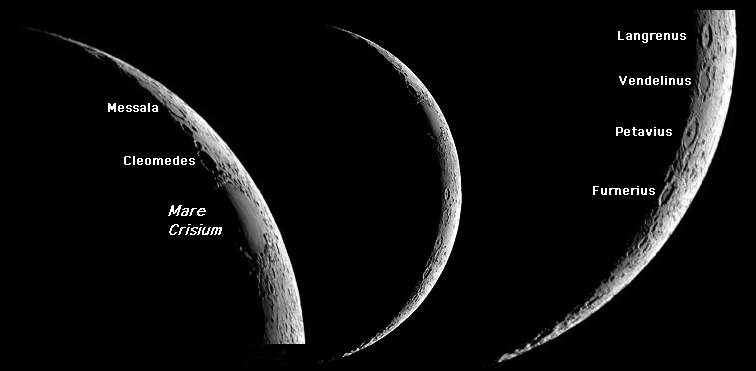Difference between revisions of "January 23, 2004"
| Line 13: | Line 13: | ||
<table width="100%" border="0" cellpadding="8"> | <table width="100%" border="0" cellpadding="8"> | ||
<tr> | <tr> | ||
| − | <td><div align="center | + | <td><div align="center"><p>Image Credit: [mailto:bethomast@hexi.com Tom Talbott]</p></div></td> |
</tr> | </tr> | ||
</table> | </table> | ||
Revision as of 15:37, 18 January 2015
Infant Moon
Image Credit: Tom Talbott |
|
Infant Moon Look west tonight, when the twilight glow is lingering, for the slender crescent of the 2-day old Moon. This is always a wonderful and frustrating time to observe. Against a pinkish-blue sky, the Moon is yellow, and within its shadow you can see a ghostly version of the landscapes to become visible over the next two weeks. But because the Moon is low in the sky, the seeing may be fitful and the Moon seems to move faster than when its high. During this infant Moon phase, Mare Crisium is the easiest feature to identify, and often a fragmentary arc of its rim extends into the night as island peaks. To the south, four large craters hug the terminator, two deep and peakful, and two shallow and flat. Have your telescope or binoculars ready to go, to enjoy this view before the sliver slips under the horizon. Related Links: Tomorrow's LPOD: Platonic Nirvana |
Author & Editor: Technical Consultant: A service of: |
COMMENTS?
Register, and click on the Discussion tab at the top of the page.




